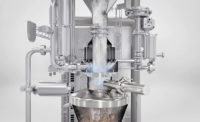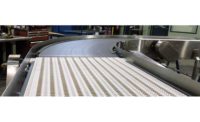I’ll sell you on lean and efficiencies, if you’ll buy into change and experimentation. In “Out of the Crisis,” W. Edwards Deming, Ph.D., known for his work in the field of quality management, was famous for saying: “I should estimate that in my experience most troubles and most possibilities for improvement add up to the proportions something like this: 94 percent belongs to the system (responsibility of management), 6 percent special.” If the aim is to improve any part of the system, beat the competition, and satisfy the customer, then lean will be the tool of choice.
Lean is a simple word, can be described as a tool, and gets as complex as imaginable. When it is heard that “We went lean,” it is, unfortunately, often said with a sarcastic and negative tone. Like azodicarbonamide and gluten, there are many misconceptions, despite abundant research and successful implementation. Lack of familiarity of its applications and rumors have led to misunderstandings.
Lean is not an end goal; it is a means to an end, a tool, a concept. The goal is to be customer-focused and the byproducts are efficiency improvements through the ability to gain sales, associate retention, quality of services, better IT support and so much more. It can reduce risk of injury on the job and simplify the shopping experience at the grocery store. The first buy-in step is to realize that lean as a concept is way beyond just manufacturing.
The concept of continuous improvement is to be more efficient, especially compared to the competition. The aim is to satisfy the customer. Since they buy what they value, lean must be applied to generate the best perceived value per product for the most-efficient cost. The second buy-in step is to understand that this involves numerous controlled tests and experiments to achieve.
Improvement starts by controlling the DMAIC (define, measure, analyze, improve, control) cycle with training, experimenting and analyzing. The third buy-in step is to recognize that improving requires change and adaptation. Every business goes through this process, and the critical aspect to success is proper management. Lean is about improving the process, and the definition of a process is a series of actions or steps taken in order to achieve a particular end. Processes are in everything we do and interact with, therefore everything can benefit from the use of lean.
A tool is no more useful than the person using it. How do we build efficiency into our processes? Training and tools, training on the tools and tool development will simplify or automate the process. As a tablet is a tool that can be used to check emails, lean is a tool to improve the interaction between how the tablet can streamline the process (which includes training), what functionalities work best to sift through the inbox, and prioritize what might require immediate action. It is way more efficient to use automation in a controlled process, but you need to control the process first.
Value has a variation in its definition if given by a different team member versus the customer—use lean to merge them. Test out new changes, ask for customer feedback and, in time, efficiencies will materialize. Now, conceptualize the thought of your customer’s needs versus your current process. What do they need, what are they willing to pay for, what new concept will they try?




